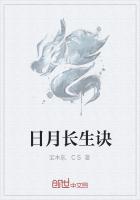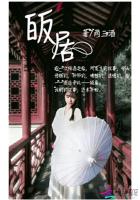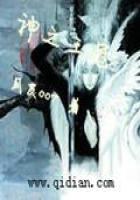Turning off on the left into the lower road, skirting the north of the castle, and following the course of the river to Datchet, by which it was understood the royal cavalcade would make its approach, the procession arrived at an open space by the side of the river, where it came to a halt, and the dean, chancellor, and prelate, together with other officers of the Garter, embarked in a barge moored to the bank, which was towed slowly down the stream in the direction of Datchet Bridge--a band of minstrels stationed within it playing all the time.
Meanwhile the rest of the cavalcade, having again set for ward, pursued their course along the banks of the river, proceeding at a foot's pace, and accompanied by crowds of spectators, cheering them as they moved along.The day was bright and beautiful, and nothing was wanting to enhance the beauty of the spectacle.On the left flowed the silver Thames, crowded with craft, filled with richly-dressed personages of both sexes, amid which floated the pompous barge appropriated to the officers of the Garter, which was hung with banners and streamers, and decorated at the sides with targets, emblazoned with the arms of St.George.On the greensward edging the stream marched a brilliant cavalcade, and on the right lay the old woods of the Home Park, with long vistas opening through them, giving exquisite peeps of the towers and battlements of the castle.
Half an hour brought the cavalcade to Datchet Bridge, at the foot of which a pavilion was erected for the accommodation of the mayor and burgesses.And here, having dismounted, they awaited the king's arrival.
Shortly after this a cloud of dust on the Staines Road seemed to announce the approach of the royal party, and all rushed forth and held themselves in readiness to meet it.But the dust appeared to have been raised by a company of horsemen, headed by Captain Bouchier, who rode up the next moment.Courteously saluting the mayor, Bouchier informed him that Mistress Anne Boleyn was close behind, and that it was the king's pleasure that she should be attended in all state to the lower gate of the castle, there to await his coming, as he himself intended to enter it with her.The mayor replied that the sovereign's behests should be implicitly obeyed, and he thereupon stationed himself at the farther side of the bridge in expectation of Anne Boleyn's arrival.
Presently the sound of trumpets smote his ear, and a numerous and splendid retinue was seen advancing, consisting of nobles, knights, esquires, and gentlemen, ranged according to their degrees, and all sumptuously apparelled in cloths of gold and silver, and velvets of various colours, richly embroidered.Besides these, there were pages and other attendants in the liveries of their masters, together with sergeants of the guard and henchmen in their full accoutrements.
Among the nobles were the Dukes of Norfolk and Suffolk--the king being desirous of honouring as much as possible her whom he had resolved to make his queen.The former was clothed in tissue, embroidered with roses of gold, with a baldric across his body of massive gold, and was mounted on a charger likewise trapped in gold; and the latter wore a mantle of cloth of silver, pounced in the form of letters, and lined with blue velvet, while his horse was trapped bardwise in harness embroidered with bullion gold curiously wrought.Both also wore the collar of the Order of the Garter.Near them rode Sir Thomas Boleyn, who, conscious of the dignity to which his daughter was to be advanced, comported himself with almost intolerable haughtiness.
Immediately behind Sir Thomas Boleyn came a sumptuous litter covered with cloth of gold, drawn by four white palfreys caparisoned in white damask down to the ground, and each having a page in white and blue satin at its head.Over the litter was borne a canopy of cloth of gold supported by four gilt staves, and ornamented at the corners with silver bells, ringing forth sweet music as it moved along.Each staff was borne by a knight, of whom sixteen were in attendance to relieve one another when fatigued.
In this litter sat Anne Boleyn.She wore a surcoat of white tissue, and a mantle of the same material lined with ermine.Her gown, which, however, was now concealed by the surcoat, was of cloth of gold tissue, raised with pearls of silver damask, with a stomacher of purple gold similarly raised, and large open sleeves lined with chequered tissue.Around her neck she wore a chain of orient pearls, from which depended a diamond cross.A black velvet cap, richly embroidered with pearls and other precious stones, and ornamented with a small white plume, covered her head; and her small feet were hidden in blue velvet brodequins, decorated with diamond stars.
Anne Boleyn's features were exquisitely formed, and though not regular, far more charming than if they had been so.Her nose was slightly aquiline, but not enough so to detract from its beauty, and had a little retrousse; point that completed its attraction.The rest of her features were delicately chiselled: the chin being beautifully rounded, the brow smooth and white as snow, while the rose could not vie with the bloom of her cheek.Her neck--alas! that the fell hand of the executioner should ever touch it--was long and slender, her eyes large and blue, and of irresistible witchery--sometimes scorching the beholder like a sunbeam, anon melting him with soul-subduing softness.

